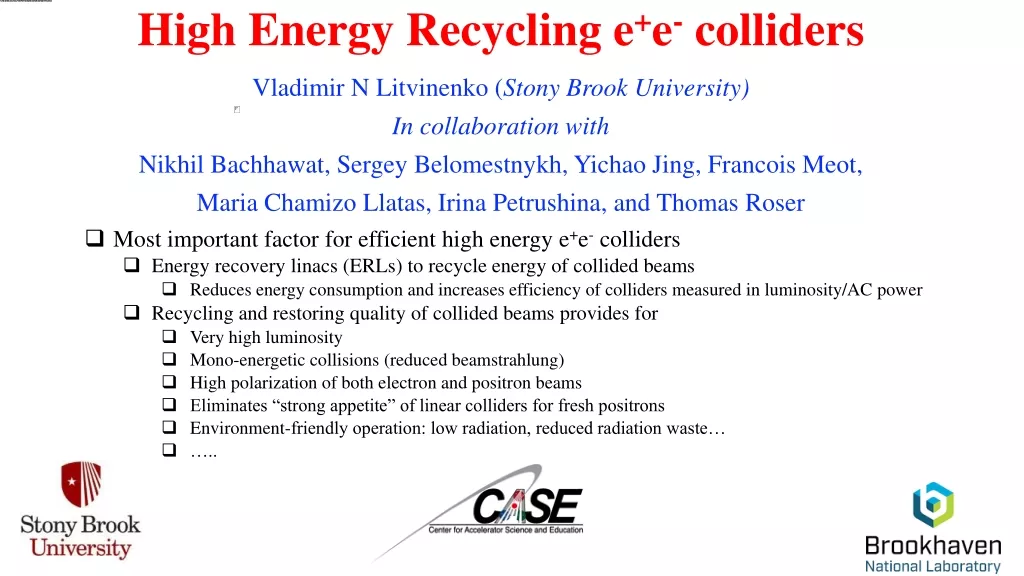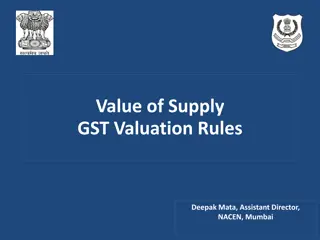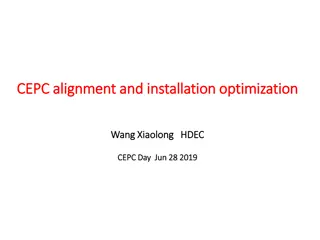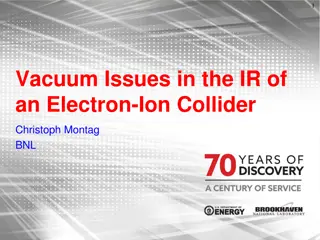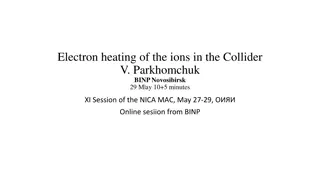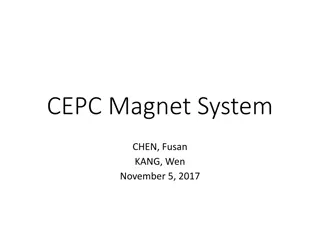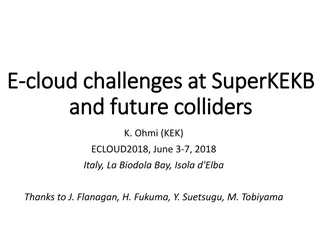
Industry and the Next Generation of Collider: Points for Consideration
The Particle Physics community globally needs industry more than industry needs the Particle Physics community. Key problem areas for industry include industrial returns, R&D, and volume manufacture. Governments require a return on funding for major investments, which can be achieved through promoting industrial growth, innovation, international partnerships, and more. Collaboration with industry for research and development is crucial for the advancement of accelerator technologies and future colliders. Sustainability and engaging industry in R&D efforts are essential considerations for the next generation of colliders.
Download Presentation

Please find below an Image/Link to download the presentation.
The content on the website is provided AS IS for your information and personal use only. It may not be sold, licensed, or shared on other websites without obtaining consent from the author. If you encounter any issues during the download, it is possible that the publisher has removed the file from their server.
You are allowed to download the files provided on this website for personal or commercial use, subject to the condition that they are used lawfully. All files are the property of their respective owners.
The content on the website is provided AS IS for your information and personal use only. It may not be sold, licensed, or shared on other websites without obtaining consent from the author.
E N D
Presentation Transcript
Industry and the next generation of collider Points for consideration Richard Farrow : Head of UK Large Facility Industrial Liaison STFC/UKRI
Problems. The Particle Physics community globally needs industry more than industry needs the Particle Physics community. We want the lowest cost for the most advanced (and highest risk) of technologies. Why should industry want to play ball? We are already seeing declining interest in certain areas. We don t work in true partnership with industry. Do we care? Exploitation of technology is an afterthought.
(Some) key problem areas for industry.. Industrial returns. Technology and product R&D. Volume manufacture.
Industrial return Governments will not consider funding unless there is return. Fair and balanced commercial contracts return is one factor. It will, however, be important to consider/capture and develop other returns to industry in order to reassure Governments about the wider benefits of any major investments. Benefits may include Headline industrial contract value / industrial growth and activity. Promoting industrial innovation (technologies and processes) Developing international profile. Supporting new industrial skills. Increasing attractiveness as employers. Greater export capability. Forging sustained relationships with academic organisations. Prompting international commercial partnerships. Central to this is the procurement model that will be deployed.
Research and Development Why bother? The technologies needed for the next generation of accelerator will stretch industry. Industry will need to make a choice whether or not to engage in the R&D needed to develop the capability to manufacture. What questions will they ask? This business or other business? What is the risks and benefits? How far it is from my bread and butter business. How sustained is the business? When will the payback be? Will the payback be competitive or risky? We are already seeing limited interest in areas. For example, Be processing and Al encapsulation of solenoids. Are there alternatives to developing specific solutions? Can we reuse/repurpose existing technology. Sustainability will need to be designed in from the start in all fields (materials, processing, use, energy, decommissioning, recycling) How (and when) will future colliders engage R&D in industry. What will the R&D model look like?
Volume manufacture The volumes and margins (cost) deployed need to be sufficient to interest multiple industrial suppliers. This means multiple contracts to develop (see above R&D) technologies and capabilities. Single source technologies will carry both unmanageable financial risk and supply chain risk. Large volumes mean working with larger contractors (cf SMEs). Larger volumes mean much greater coherence in design / manufacturing process with different suppliers. Longer term visibility needed to engage manufacturing business. Manufacturing schedules will be less flexible.
Comments / ideas. Return plan. A clear plan for how a wider range of returns will be realised, evidenced by reports from existing facilities would help funding from Governments. Roadmap. A full roadmap of the technologies required, coupled with options appraisal of develop and exploit and adopt and adapt for each technology will be necessary. Industry Board. Engaging a representative industrial advisory board would help the community clarify the direction and strategic interface with industry. Model. Early development of a funding / R&D / procurement model which recognises the critical role of industry.

